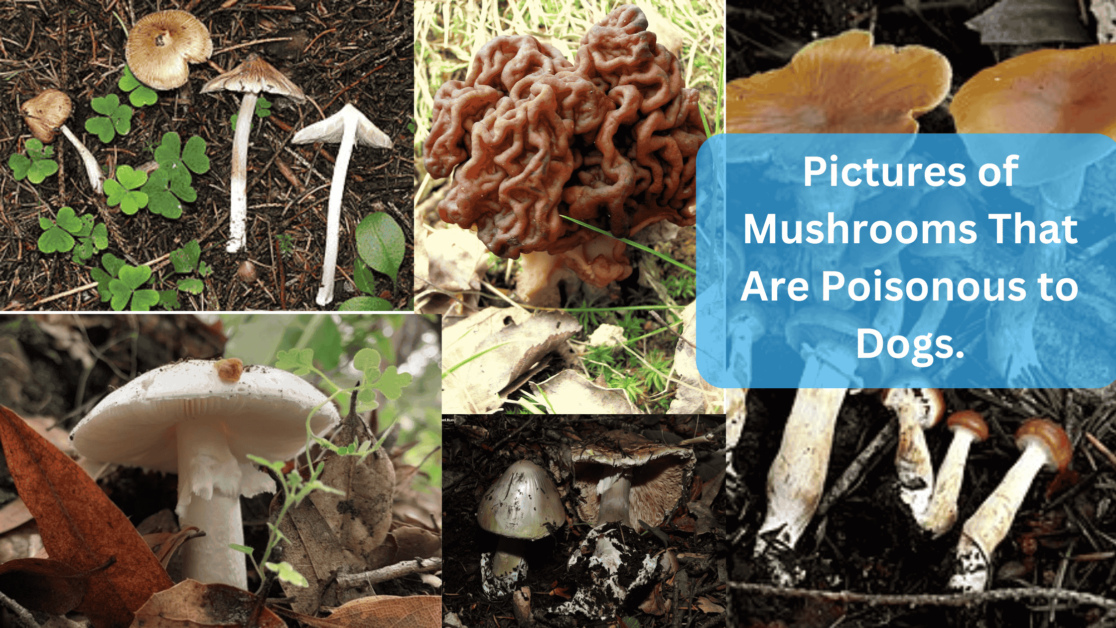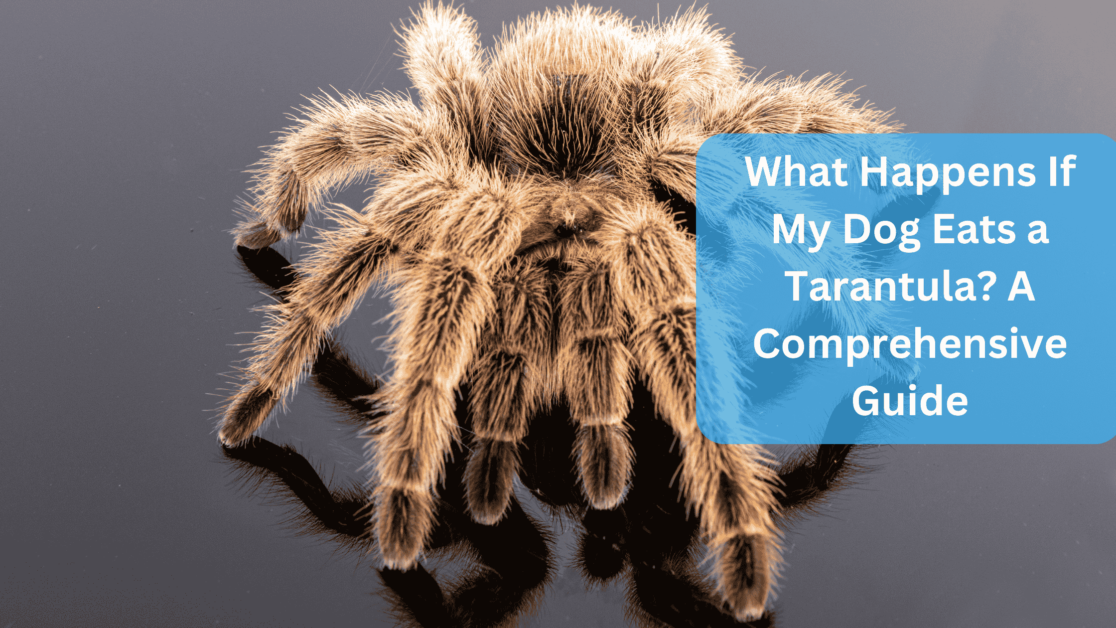What Happens If My Dog Eats a Tarantula? You’re out for a leisurely stroll with your canine companion, the sun is shining, birds are singing, and then… squish.
Your dog has just discovered something a little… different. It’s not a stick, it’s not a discarded chicken bone; it’s a tarantula. Yes, a hairy, eight-legged tarantula.
🕷️ The thought alone might make your skin crawl (and maybe your dog’s too, if they understood the gravity of the situation!).
But what happens if your curious pup decides to make a snack out of one of these arachnid oddities? Fear not, fellow dog lovers! This guide is here to navigate this rather unusual (and slightly terrifying) scenario.
We’ll cover everything from understanding tarantulas to recognizing symptoms and knowing exactly what to do if your dog decides to have a tarantula tasting menu.
Let’s get started, shall we?
Understanding Tarantulas: More Than Just Big, Hairy Spiders
First things first, let’s get acquainted with our eight-legged subject. Tarantulas aren’t your average garden-variety spiders; they’re the heavyweights of the arachnid world. These large, hairy spiders belong to the Theraphosidae family.
They’re not insects, mind you; they’re arachnids, meaning they have eight legs and two body segments.
You might find them in various habitats, from deserts to rainforests, and they’re often nocturnal, meaning they’re most active at night – kind of like the night owls of the spider world. 🦉
Now, are all tarantulas equally dangerous? Well, not exactly. While they all possess venom, the potency varies among species.
Some tarantulas have a mild venom, akin to a bee sting, while others can pack a bit more of a punch.
It’s also worth noting that tarantulas have urticating hairs (those tiny, irritating hairs on their abdomen) that they can flick off as a defense mechanism.
These hairs can cause irritation and discomfort, especially if they get into your dog’s eyes or mouth. They’re like nature’s tiny, itchy booby traps.
What Happens If My Dog Eats a Tarantula?
The Risks of a Dog Eating a Tarantula: More Than Just a Bad Taste in Their Mouth
So, what are the actual risks if your dog decides to chomp down on a tarantula? Let’s break it down:
- Tarantula Venom:
- Tarantula venom is primarily designed to subdue prey, not to be a deadly weapon. It’s a neurotoxin, meaning it affects the nervous system. In dogs, the venom can cause local reactions like pain, swelling, and redness at the site of the bite. In rare cases, especially with more potent venom, it can lead to systemic reactions, affecting the whole body. It’s like a tiny, targeted attack on their nervous system.
- It’s important to understand the difference between venom and poison. Venom is injected (like a spider bite), while poison is ingested (like eating something toxic). Tarantulas use venom, not poison, so your dog won’t be poisoned from eating it, but they might have a reaction to the venom.
- Physical Hazards:
- Those urticating hairs we mentioned? They can cause significant irritation if they get into your dog’s mouth or eyes. You might see your dog pawing at their face, drooling excessively, or showing signs of discomfort. It’s like a tiny, itchy invasion.
- The tarantula’s exoskeleton (its hard outer shell) can also pose a risk. It can be difficult to digest and might cause choking or digestive issues, especially in smaller dogs. It’s like trying to chew on a tiny, crunchy suit of armor.
- Secondary Issues:
- If your dog gets bitten by a tarantula, there’s a risk of secondary infections. Any open wound can become a breeding ground for bacteria, which can lead to further complications. It’s like an open invitation for unwanted guests.
- While rare, some dogs may have an allergic reaction to the tarantula’s venom or hairs, which can manifest as more severe symptoms. It’s like their body is saying, “Nope, not a fan!”
Symptoms to Watch For: Keeping a Close Eye on Your Pup
Okay, so your dog has potentially eaten a tarantula. Now what?
- Immediate Symptoms:
- Pawing at the mouth or face: Your dog might be trying to get rid of those irritating hairs or the feeling of the bite. It’s like they’re trying to say, “Get this thing off me!”
- Drooling or excessive salivation: This is a common response to irritation or the taste of something unpleasant. It’s like their mouth is saying, “Ew, what was that?”
- Vomiting or gagging: Their body might be trying to expel the unwanted snack. It’s like their tummy is having a little protest.
- Agitation or restlessness: They might be feeling uncomfortable and not know what to do. It’s like they’re saying, “Something’s not right!”
- Later Symptoms:
- Swelling around the mouth, face, or throat: This can indicate a reaction to the venom or hairs. It’s like their face is puffing up in protest.
- Difficulty breathing or wheezing: This is a serious sign and requires immediate veterinary attention. It’s like their lungs are saying, “Help, I need air!”
- Lethargy or weakness: Your dog might seem unusually tired or weak. It’s like their battery has run out.
- Muscle tremors or twitching: This can indicate a more severe reaction to the venom. It’s like their muscles are having a little dance party they didn’t sign up for.
- Changes in behavior: They might hide, whine, or act unusually withdrawn. It’s like they’re saying, “I don’t feel like myself.”
- Redness or irritation on skin or mucous membranes: This can indicate a reaction to the tarantula’s hairs. It’s like their skin is saying, “Ouch!”
The severity of symptoms can vary depending on several factors, including the size of your dog, the type of tarantula, and the amount ingested.
Smaller dogs are generally more susceptible to severe reactions, and some tarantula species have more potent venom than others. It’s like a game of chance, but one you don’t want to play.
What To Do If Your Dog Eats a Tarantula: Act Fast, Stay Calm (and Maybe Grab Your Phone)
If you suspect your dog has eaten a tarantula, it’s time to act quickly but calmly. Here’s what you should do:
- Immediate Actions:
- Stay Calm: Your dog will pick up on your anxiety, so try to remain calm and collected. It’s like being the captain of a sinking ship – you need to stay cool.
- Assess the Situation: Check your dog for any immediate signs of distress. It’s like a quick triage to see what’s going on.
- Remove Any Remaining Tarantula Parts: If there are any tarantula bits still in your dog’s mouth, carefully remove them. It’s like cleaning up the crime scene.
- Do Not Induce Vomiting: Unless specifically instructed by your veterinarian, do not try to make your dog vomit. It could cause more harm than good. It’s like trying to fix a computer by hitting it – it’s probably not going to work.
- Try to Identify the Tarantula: If possible, try to identify the species of tarantula. This information can be helpful for your vet. It’s like gathering evidence for the case.
- Contacting Your Veterinarian:
- When to Seek Immediate Care: If your dog is showing any of the more serious symptoms (difficulty breathing, severe swelling, muscle tremors), seek immediate veterinary care. Even if the symptoms seem mild, it’s always best to err on the side of caution. It’s like calling for backup – better safe than sorry!
- What Information to Provide: When you call your vet, be prepared to provide details about what happened, the symptoms your dog is exhibiting, and any information you have about the tarantula. It’s like giving the vet a full report.
- Veterinary Treatment:
- Treatment for tarantula envenomation in dogs typically involves supportive care. This might include IV fluids to keep them hydrated, pain management to relieve discomfort, and antihistamines to reduce swelling. In more severe cases, your vet might need to monitor your dog for any complications and provide additional treatments as needed. It’s like giving your dog a spa day, but with medical professionals.
Prevention Strategies: Keeping Your Pup Safe (and Tarantula-Free)
Of course, the best approach is prevention. Here are some strategies to keep your dog safe from tarantula encounters:
- Environmental Awareness:
- Identify Tarantula Habitats: Learn about the areas where tarantulas are commonly found and avoid those areas when walking your dog. It’s like knowing the “no-go zones.”
- Keep Your Yard Clean: Remove any debris, wood piles, or other hiding spots where tarantulas might set up shop in your yard. It’s like tidying up to avoid unwanted guests.
- Leash Training:
- Keep Your Dog on a Leash: This is crucial for preventing your dog from wandering off and encountering a tarantula. It’s like having a safety tether.
- Train “Leave It” or “Drop It”: These commands can be lifesavers in situations where your dog picks up something they shouldn’t. It’s like teaching them to say “no thanks” to unwanted snacks.
- Supervision:
- Close Supervision: Always keep a close eye on your dog, especially in areas where tarantulas might be present. It’s like being a watchful guardian.
- Home Safety:
- Secure Your Home: Check your home for any cracks or openings where tarantulas might enter. It’s like fortifying your castle.
- Check Hiding Spots: Regularly check areas like basements, garages, and storage areas where tarantulas might hide. It’s like a regular sweep for unwanted visitors.
FAQ’s: Your Burning Questions Answered
Are tarantulas deadly to dogs?
While tarantula venom is not usually deadly to dogs, it can cause significant discomfort and, in rare cases, severe reactions. It’s like a bad day, not a game-over scenario.
What does tarantula venom do to dogs?
Tarantula venom is a neurotoxin that can cause local reactions like pain, swelling, and redness, and in severe cases, systemic reactions like muscle tremors or difficulty breathing. It’s like a tiny, targeted attack on their nervous system.
How can I tell if my dog is having a reaction to a tarantula bite?
Watch for symptoms like pawing at the mouth, drooling, vomiting, swelling, difficulty breathing, lethargy, and muscle tremors. It’s like their body is sending out signals.
What should I do if my dog gets tarantula hairs in their eyes?
Flush their eyes with cool water and seek veterinary care if the irritation persists. It’s like giving their eyes a little rinse.
Can I treat a tarantula bite at home?
It’s best to seek veterinary advice for any suspected tarantula bite. Do not induce vomiting without instructions from your vet. It’s like calling the experts.
Are some tarantula species more dangerous to dogs than others?
Yes, the potency of tarantula venom varies among species. Some have mild venom, while others can cause more severe reactions. It’s like a spectrum of spider-venom intensity.
Also Read: How to Treat a Poisoned Dog at Home: A Comprehensive Guide
Also Read: Healthy Diet Plans for Dogs with Weight Issues: A Tail-Wagging, Comprehensive Guide
Conclusion: Peace of Mind for You and Your Pup
Dealing with a dog who’s decided to make a meal out of a tarantula is definitely not on anyone’s wish list. But by understanding the risks, recognizing the symptoms, and knowing what to do, you can be prepared for this unusual situation.
Prevention is key, so be sure to keep a close eye on your pup and take the necessary steps to avoid tarantula encounters. Remember, your vet is your best resource for personalized advice, so don’t hesitate to reach out if you have any concerns.
With a little knowledge and a lot of love, you can keep your furry friend safe and sound. And who knows, maybe next time, your dog will stick to sniffing out those interesting-looking rocks instead! 🐶❤️
Sources:







